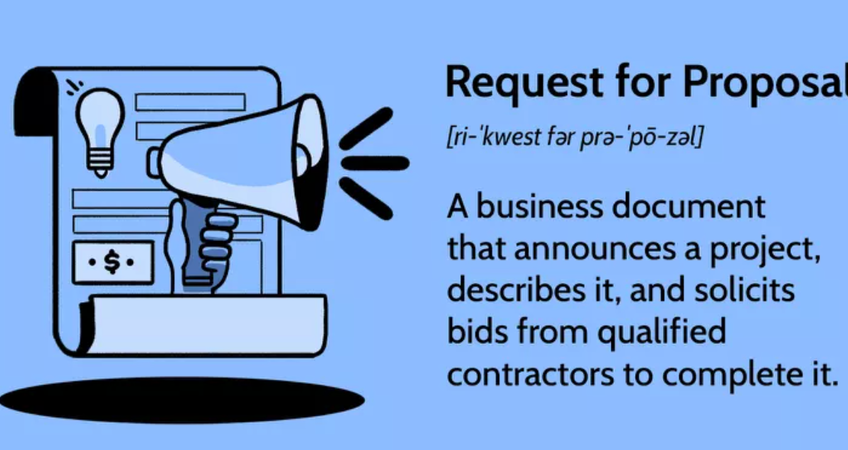
Most businesses are terrified to go through a process of going to market and asking multiple eCommerce Platforms and Agencies to respond with proposals. The result of this fear is decision-making-paralysis in this context.
This sense of paralysis has grown since COVID because all businesses have seen, firsthand, the shortcomings of their online channel and its inability to drive growth for the wider business.
The purpose of this article is to break down how this process needs to run to enable you to engage with multiple vendors and have a high degree of confidence in making the right selection.
There are many names for this (such as "RFP - request for proposal"), but to keep things simple it will be called the "Vendor Selection Process". And each time the term "Vendor" is used, it will refer to both the eCommerce Platforms and the eCommerce Agencies.
Purpose of the Vendor Selection Process:
Before breaking down the process itself, it's important to establish the purpose and desired outcomes. Once that is clear, the process makes more sense.
The purpose of this process is to produce the following outcomes....
- Have multiple eCommerce platforms present their solution in the context of your business needs (a "Business Needs" document needs to be created prior to this process - see more on this below).
- Have multiple solutions presented in a way where you can produce a clear and simple "apples to apples" comparison.
- Allow each Vendor the opportunity to present their best solution to you and your business.
- Create a sense of high confidence in making the right selection.

There is no way any business can confidently select a new eCommerce platform without an RFP process that produces the above outcomes.
What does the Vendor Selection Process need to look like?
There is a science to this process. Below is a high level summary of the activities required to run a Best Practice Process...
1. Work with the business to recommend a selection of eCommerce platforms and eCommerce Agencies to take part.
2. Reach out to each Vendor and introduce them to the opportunity to take part. If they accept, have them sign an NDA.
3. Brief each Vendor on the process, how it will run, call out timelines and take them through the RFP document. Give Vendors all deadlines required of them.
4. As the Vendor's are preparing a written response, there are a high volume of questions that will arise. These questions must be addressed and many times, more information is required. If one Vendor receives more information, this "new" information must also be circulated to the other Vendors to ensure everyone is given the same information to respond to.
5. As the Vendor responses come through, they are first reviewed before sending. This is to ensure the document satisfies all business needs. If not, the Vendor is told (in writing) what information is missing and what is required to fill the gaps.
6. In preparation for receiving all completed documents, a "Ranking Card" is created specifically for the business. All core business requirements are placed in this ranking system and each Vendor is given a score out of 10. There is a mix of technical capabilities, relationship capabilities and costs that make up these scores.
This method is done intentionally to avoid the common (and incorrect) practice of selecting a Vendor purely on price.

7. Once all documents are submitted, an internal review commences. This is where all documents are read and discussed internally. This is also where the scoring of each Vendor is done.
8. Once the review is done and scoring completed, the business shortlists down to 2 Vendors. These 2 remaining Vendors must then conduct a face-to-face presentation at your office location.
The agenda for this presentation is in alignment with the Vendor response document. The Vendors are given coaching on what to present and how to present it to ensure the business gains maximum value from this face to face interaction.
Vendors are advised to bring other members of the team so the business can meet the people they will work with. This session is also where specific demo's can and should be shown to give the business a high degree of confidence in certain functional requirements.
9. After the presentations are completed, the business conducts a final review. At this stage of the process, the business will have the following information at their disposal...
- The Vendor response documents which includes pricing guidelines for Phase 1
- Scores for each Vendor
- A feel for the Vendor from the face to face presentations
The business is now in a position to confidently decide on a new eCommerce Platform and a new eCommerce Agency to partner with.

10. Once the final decision is made, both the winning and losing Vendors are notified. The losing Vendor is given feedback as to why they were not selected (professional courtesy).
This formally ends the RFP process which is typically 12 weeks in duration but there are many variables that will make this go faster and slower.
The Role of an eCommerce Specialist:
For the above to run smoothly there are two things that must be in place prior to this process running...
- You need the appropriate planning documentation in place
- You need a specialist to run the process
Planning Documentation:
No business can engage with eCommerce Platforms and eCommerce Agencies until they know two things...
- The strategic future of the business and how the online channel is to support that strategic future
- The specific details of what a Phase 1 Replatform project must look like to lay down a new foundation and activate the first round of "low hanging fruit" changes that will bring rapid ROI.
The eCommerce Specialist helps you create this documentation.
The Specialist:
Your business needs an eCommerce Specialist who can....
- Sit on your side of the table and look out for your best interests.
- Become the translator between the Vendors and you. Many Vendors will try to confuse you with technical language. The Specialist protects you from this tactic.
- Micro manage the Vendors to ensure the Selection Process is run to benefit you, not the Vendor.

Conclusion:
Every business now has a fiduciary responsibility to conduct a rigorous selection process when moving to a new eCommerce Platform and eCommerce Agency.
Why? Because the online channel is the hub of business wide growth and has been for quite some time.
If you get this selection wrong, you risk the growth potential of your entire business.
This article was as tagged as